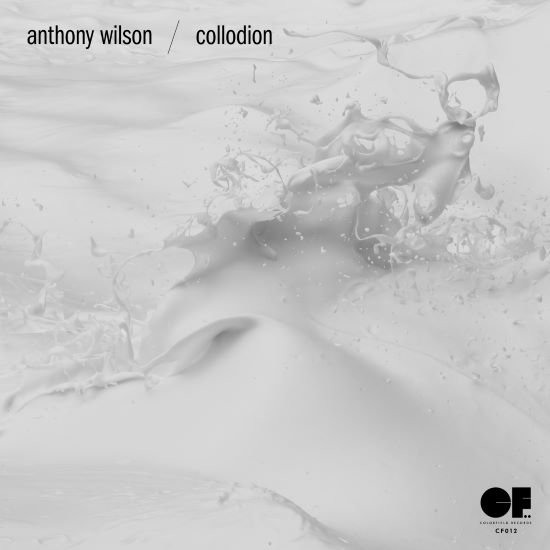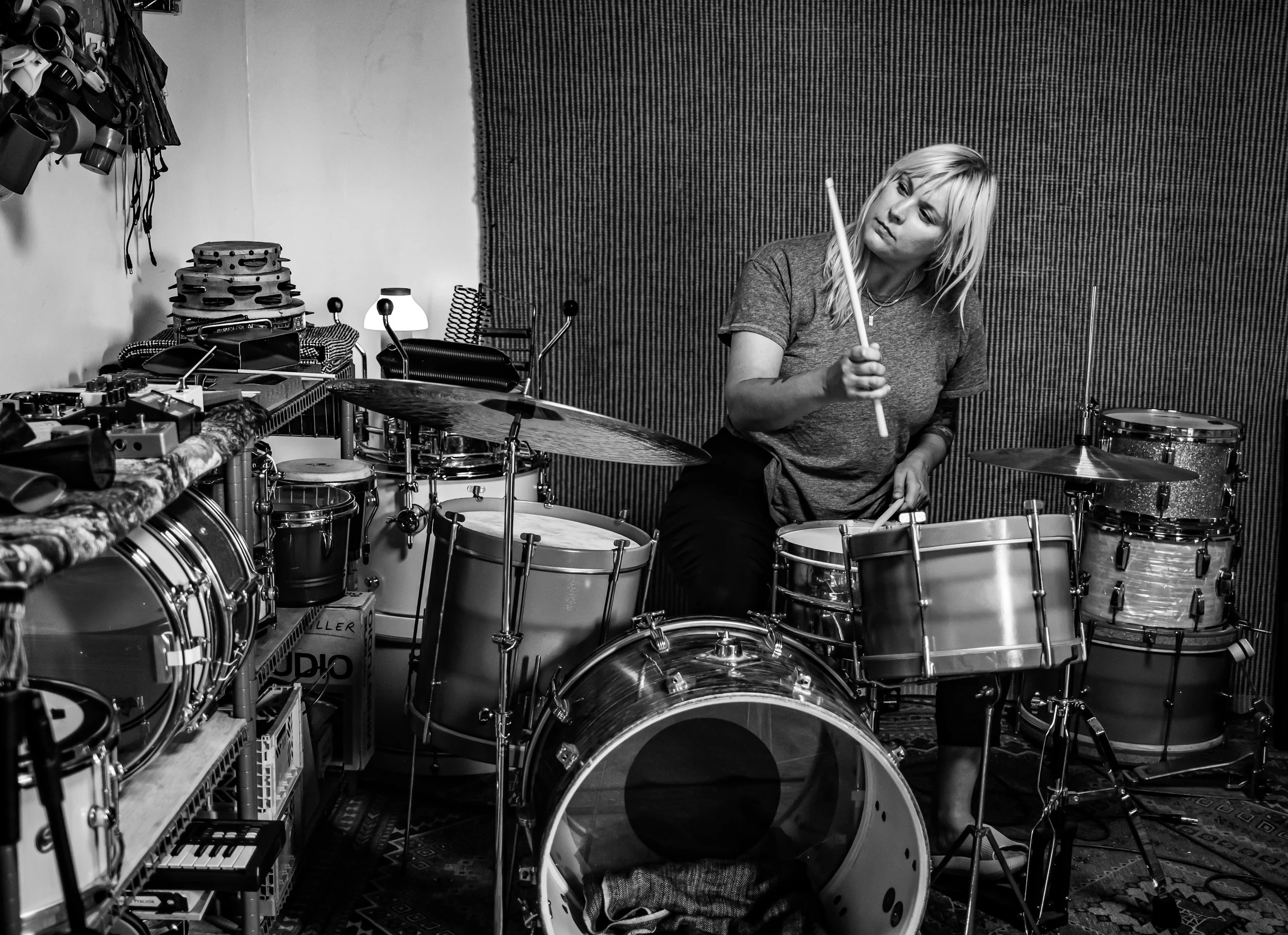Anthony Wilson explores new sonic territories with COLLODION
Photo by Meg Young
Born in Los Angeles in 1968, guitarist and composer Anthony Wilson is known for a body of work that moves fluidly across genres. The son of legendary jazz trumpeter and bandleader Gerald Wilson, his musical lineage has deeply influenced his creative trajectory, compositional choices, instrumental groupings, and the wide-ranging twelve-album discography that blooms out of them.
In this interview, Anthony discusses his newly released album Collodion, which he recorded with producer and engineer Pete Min for Los Angeles’s innovative Colorfield Records.
Interview by Tyler Nesler
Collodion is out on Colorfield Records, and it emerged from sessions with Pete Min at his Lucy's Meat Market studio in Los Angeles. Colorfield has a roster of young, emerging musicians, and it encourages them to compose in-studio within a free-form, collaborative atmosphere where they often play instruments they're not used to. What was the most tantalizing aspect of creating music in this manner for someone like yourself, who already has a substantial body of work?
Something I’m always hoping for as a composer, player, and improviser is the opportunity to transcend my own habits and find a way of working that feels as if it’s simply arising spontaneously. Almost as if it’s arising out of nothing, then disappearing without a trace. These kinds of possibilities don’t always happen, for different reasons. Maybe you’re playing with musicians you’ve worked with for a very long time, so there are certain traditions you’ve fallen into together, over time.
Or maybe you habitually turn to a favorite guitar or piano that has a certain vibe and tone that determines the style or nature of what you’re playing or writing. It’s not that there’s no spontaneity in those situations, but it’s of a different kind than what happens if you literally go into a room without a single idea in your head and start playing on random instruments in some way, almost like a child would do, just moving your hands and being mindful that you quiet the voice in your head that begins to analyze what you’re doing. That’s the environment that Pete encourages in his studio. What’s tantalizing about it is the sense of discovery fostered by this creative process and state of mind, and how it consistently ends up yielding compelling results. We’d always end the day with a semi-complete song that was surprising to our ears, and that kept me coming back for our next workday.
Did you feel apprehension over dropping old playing and recording habits and opening yourself up to Colorfield's organic creative process? How did Pete Min help to facilitate an atmosphere that best fostered this approach for you?
I was very excited to jump in. But there were some days when I’d wake and didn’t feel confident that I was going to come up with anything interesting. There it was: that voice in the head that wants to judge or analyze or overthink. But Pete has this great way of making sure that the overthinking doesn’t get in the way. For instance, on the day we made “Dream Oracle," I walked in and after a little chatting, he said, “Why don’t we set up the Octobans and start something with those.” Then he set up and mic’d the instruments, put a pair of mallets in my hand, and said, “Ok, go!” And so, like that, pretty much with every song, we’d just “go” and keep going until the shape of the music started to be revealed without trying to craft it via a more thought-mediated kind of “artistry.”
Before 2016, you recorded primarily instrumental music but sang on the following three albums. With Collodion, you've returned to all-instrumental, but do you think your recent vocalist work influenced your approach to instrumental composition on this record? Has singing made you think about playing in new ways?
I imagine it has. Since about that time (2016), when I made my album Frogtown, I have been trying to create musical environments that feel a little like short stories. Beginning, middle, end…musical narrative with a world and atmosphere being created. This was because I was a bit bored with improvised jazz solos over-determining the nature of the complete performance and taking the listener away from the essence of the composition, rather than the composition creating a specific enough setting for the improvising that it (the improvising) wouldn’t overwhelm it. I was thinking about that. And singing and songwriting were for me an extension of that search.
Adding lyrics into my practice, I then had the automatic possibility of a story being told. Singing a melody and lyrics just balances the performance for me. As a result, I suppose there’s a songfulness that now has become a natural part of my writing and the way I structure things even when playing simply an improvised solo. Returning to instrumental music, even in this more abstract and improvisational way of making it, my pieces are now more automatically embracing a kind of melodious songfulness and if not that, at least a sense of unfolding narrative that I find rewarding to listen to.
You play much of the album's first half entirely, but several other artists join on later tracks (Anna Butterss, Daniel Rotem, Mark Giuliana, Rob Moose, Julien Knowles). What were some unexpected elements brought to the project by these additional players that you believe added different dimensions to the finished project?
To invite these amazing friends into the process added some of the most important elements on the album. Pete and I would talk about what a song needed after I had brought it to a certain point of development. In each of the pieces that incorporate other musical voices, it seemed like the addition of one or two particular elements, from another strong voice, would bring vitality and dimension to the music.
We followed the same process we had used as I was beginning the songs. Very little talking, just letting them hear what was there, and letting them wander into the music, encouraging them to try different approaches as they went. In every case, what they played was something we wouldn’t exactly have predicted but fleshed out and completed the music, made it more dynamic and layered. For example, in different sections of “Arrival at Kanazawa,” Mark Guiliana played different sections of the song on different drum sets with totally different tunings & treatments to create a variety of sonic worlds. He’s so brilliant, and just made that song vibrate in a different way. In the case of Rob Moose’s astounding work on “Collodion,” which required him to make a true string “arrangement,” I asked him to think about his strings not just supporting my piano and keyboard composition, but to actually dance and move with it, creating layers of contrast and shifting registers.
And Daniel Rotem’s solo at the end of “Dream Oracle”? Oh my god, it’s just so amazing and creates the perfect ending section to the song, lifted by his ideas and his incredible sound!
Photo by Ricky Chavez
Lucy's Meat Market has a collection of many unusual and rare instruments. Could you talk about one or two of you played for this album which were new experiences for you, and how you think they brought surprising contributions to the recordings?
I really love playing with the Morfbeat chromatic gamelan strips, and adore using the Soma Pulsar 23 drum machine. The coolest thing for me, in using the various synths, keyboards, and percussion instruments that Pete has collected at Lucy’s Meat Market, is that I was always a beginner or semi-beginner with them, and so I always approached them in a spirit of discovering unexpected possibilities.
In the case of the Morfbeats, which are resonant pitched metal bars played with mallets, we placed them in random pitch orders and then after recording a track, messed with the results sonically, opening the door to a beautiful underpinning for the song “Keeping,” and the Pulsar 23, with its random rhythm generator that can pair with the midi information of a synth track, and its little alligator clips and conductors (using them reminded me a little of playing the old game “Operation”) that allows the player to spontaneously access a panorama of astounding rhythmic percolations, gave a great vibrancy to the song “Planetary Glide.”
The video for "Arrival at Kanazawa" has very collage-like dreamy imagery that matches the song's mood well. How did director Wes O'Connor become involved in the project? Did you collaborate with him at all on the assembly of its visuals?
Thanks for asking about Wes, whom I’ve enjoyed working with so much! I was connected with them in 2021, via a mutual friend. I was looking for someone who could do some videos for three songs on my album The Plan of Paris. Those videos were different from the ones for Collodion in that the songs had lyrics, and I wanted to show the lyrics in the videos, but didn’t just want scrolling lyrics with a static, or non-visually interesting background.
Wes works with public domain archival video footage and finds some truly amazing stuff, from which they then edit together a narrative video. For The Plan of Paris lyric videos, I asked Wes to check out the songs and lyrics and just go for it. They found imagery that loosely referred back to the subject matter of the songs, and then we’d go back and forth through a few versions to arrive at some very satisfying visual versions for the songs.
[With] Collodion, being instrumental and also quite ambient and improvisational, we collaborated just a little more closely. I’d send Wes the song, and after listening, they sent screenshots from a large array of video content, and I would select from those the ones that spoke to me and seemed to capture some of the feeling of the song. Then we’d find and list the song timings that seemed to determine the basic form, so that Wes could really track the pivotal moments in the song. One thing I was so impressed by in Wes’ videos for “Arrival at Kanazawa” and “Dream Oracle” was how beautifully their visual pacing and editing danced with the internal rhythms of the music. I hope we’ll get to do more together in the future.
Collodion is available now.
Listen to our recent podcast interview with Pete Min of Colorfield Records.








